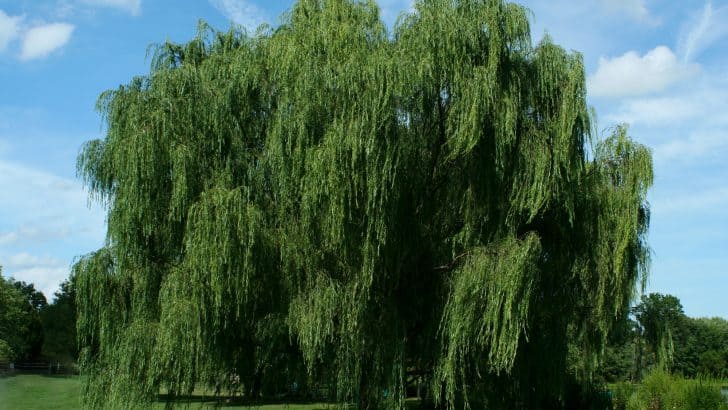If you live in a wet climate like Florida, or if your home is in an area susceptible to flooding, you probably are all too aware of the plight of a flooded garden. Luckily, there are some changes you can make to your yard to soak up some of the excess water.
For example, planting certain trees and shrubs can help you avoid wet soil and keep the water at bay.
Trees that absorb more water include red maple, black gum, weeping willow, ash, and white cedar. Some other plants that absorb more water include cattail, elephant’s ear, American cranberry, ajuga, Indian grass, red twig dogwood, and many more.
Continue reading until the end of this article for suggestions of plants to grow in your garden that absorbs excess moisture from your wet soil.
The water-absorbing plants below are categorized into trees, bushes, shrubs, ground cover, and flowers, and there are even some alternative drainage solutions suggested at the end. Let’s get started!
Trees That Absorb More Water
Some trees can absorb thousands of gallons of water throughout the year. As a result, trees are commonly planted to protect wet properties against flooding and excess moisture. Their extensive root systems help soak up water in excessively wet soil. They also have the added benefit of providing partial shade to an area.
Here are some trees you can grow at home to keep your garden, sandy, or clay soil dry throughout the year.
1. Red Maple
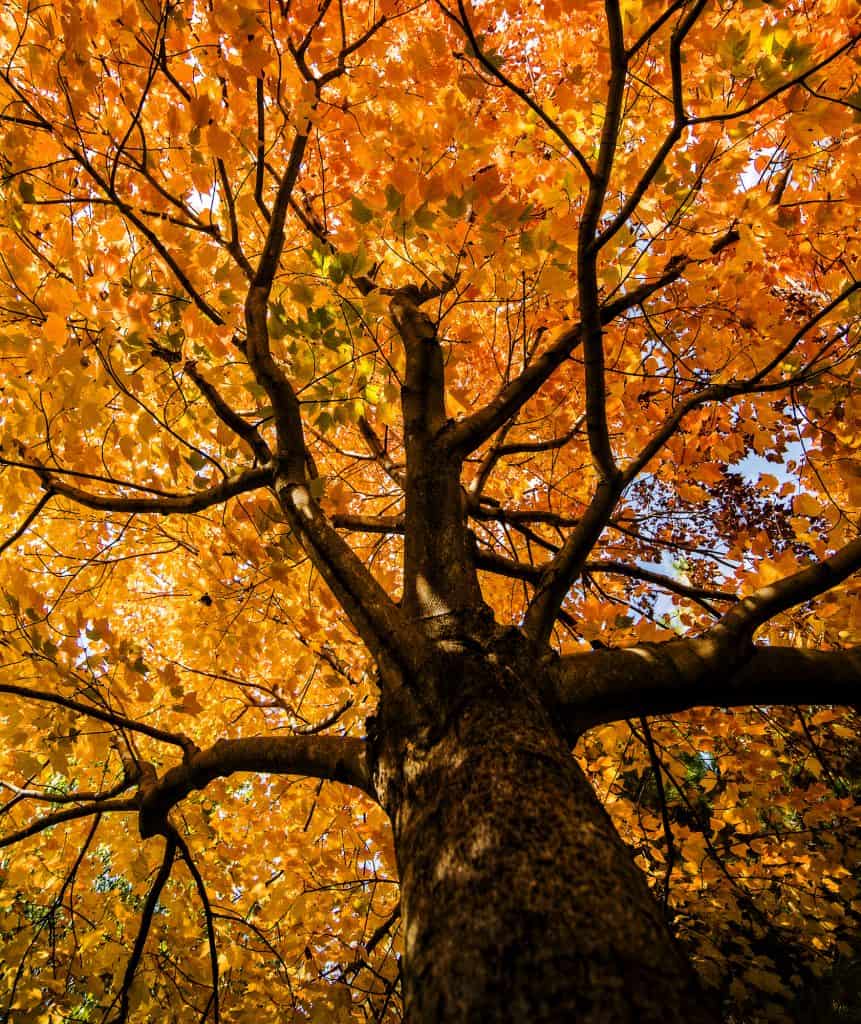
An adult red maple tree can absorb over 8,500 gallons of water a year. That’s an impressive amount of water, just by one tree. If you planted five or ten of these trees in your garden, there would need to be an unprecedented amount of rainfall for your garden to flood.
Red maple trees also catch rain on their leaves and branches. This prevents it from reaching the ground quickly, keeping your garden from flooding.
2. Black Gum
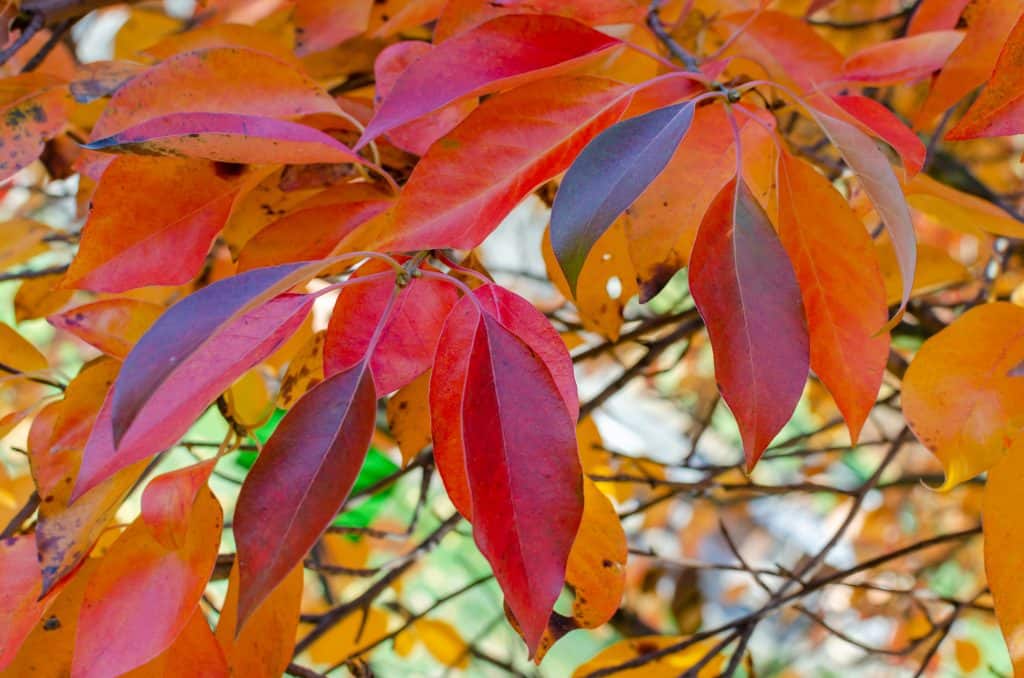
A black gum tree is excellent for planting in wet areas on your property. The black gum tree is a medium-sized tree native to North America. Black gum trees are deciduous, which means they have green leaves in the summer and none in the winter.
However, black gum tree leaves in the fall turn a beautiful red color.
3. Weeping Willow
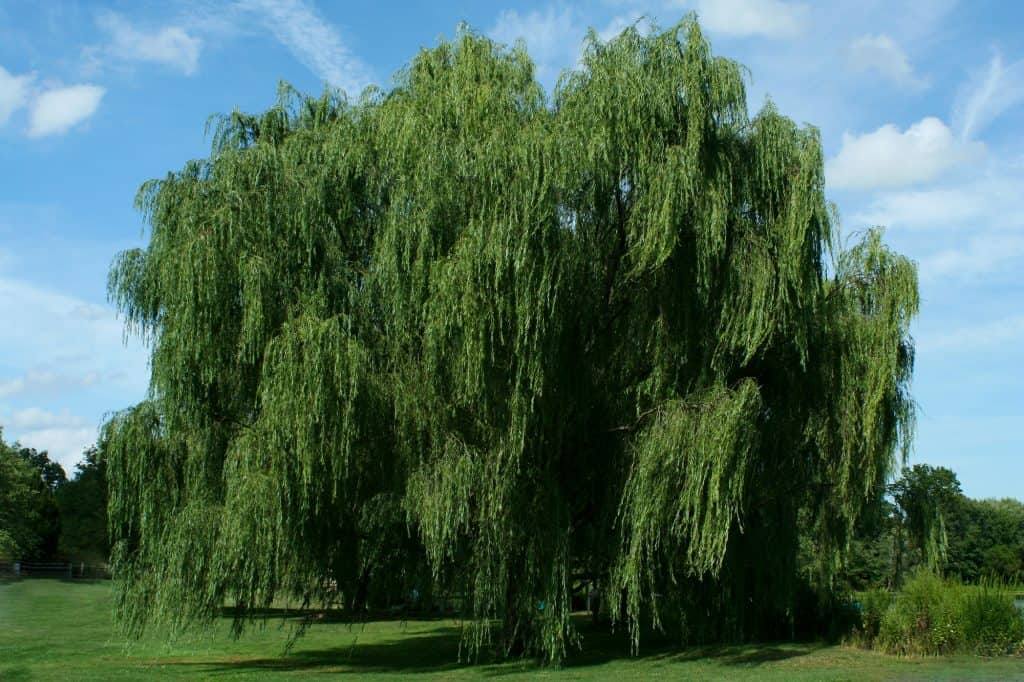
The weeping willow is an iconic tree with long hanging branches. These trees are typically grown near rivers, lakes, and ponds, making them great trees for planting in a wet garden. Weeping willows can hold excess water in their roots and leaves. As a result, they’re an ideal tree for managing flooding on your property.
4. Ash
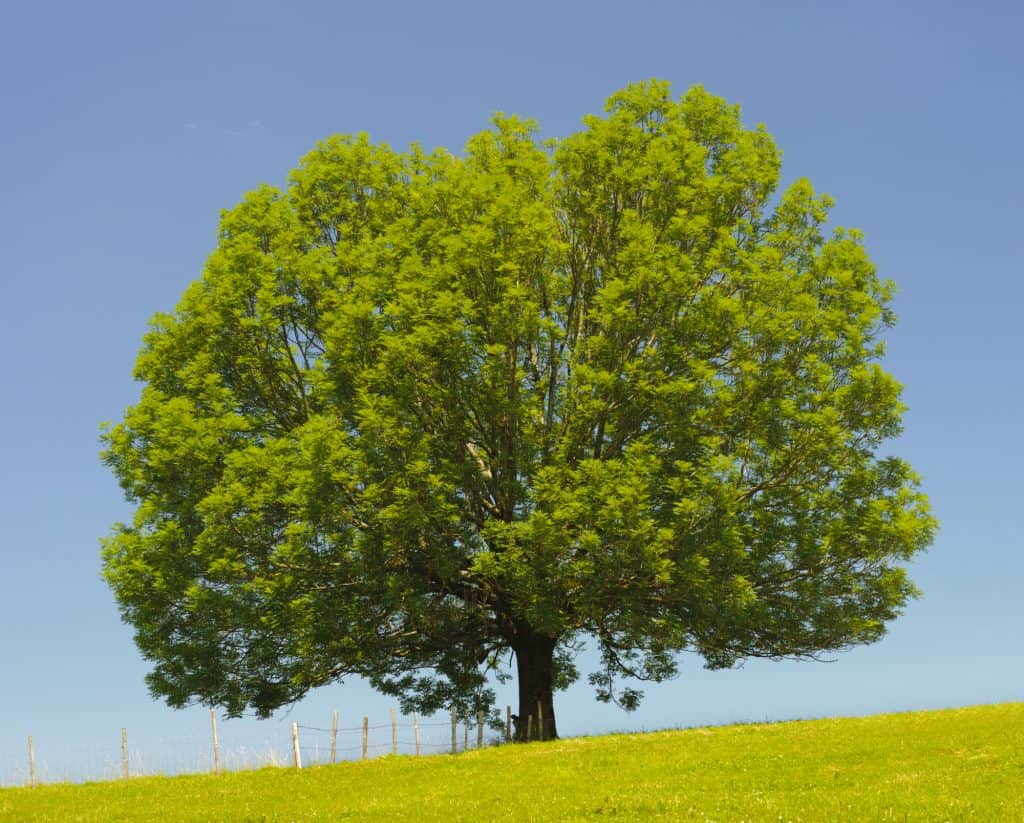
Ash trees are another absorbent variety that you can plant. Ash trees are also excellent at disrupting water flows after storms or rainfall due to their long, dense root systems. This is a bonus in preventing flooding on your property as it helps to disrupt water runoff from nearby sources.
5. White Cedar
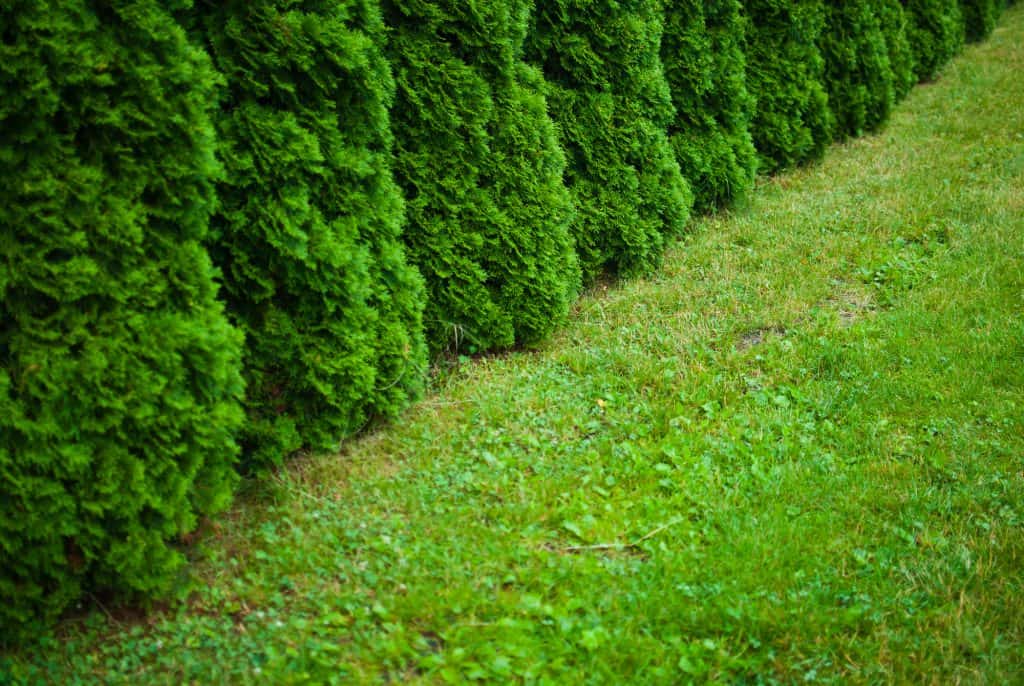
White cedar is a beautiful, large tree that thrives in excessively humid areas. This has led some people to call it ‘swamp cedar.’ White cedar is also an evergreen tree, meaning that you can enjoy the luscious green colors even during the cold winter months, adding to the overall aesthetic of your garden.
6. River Birch
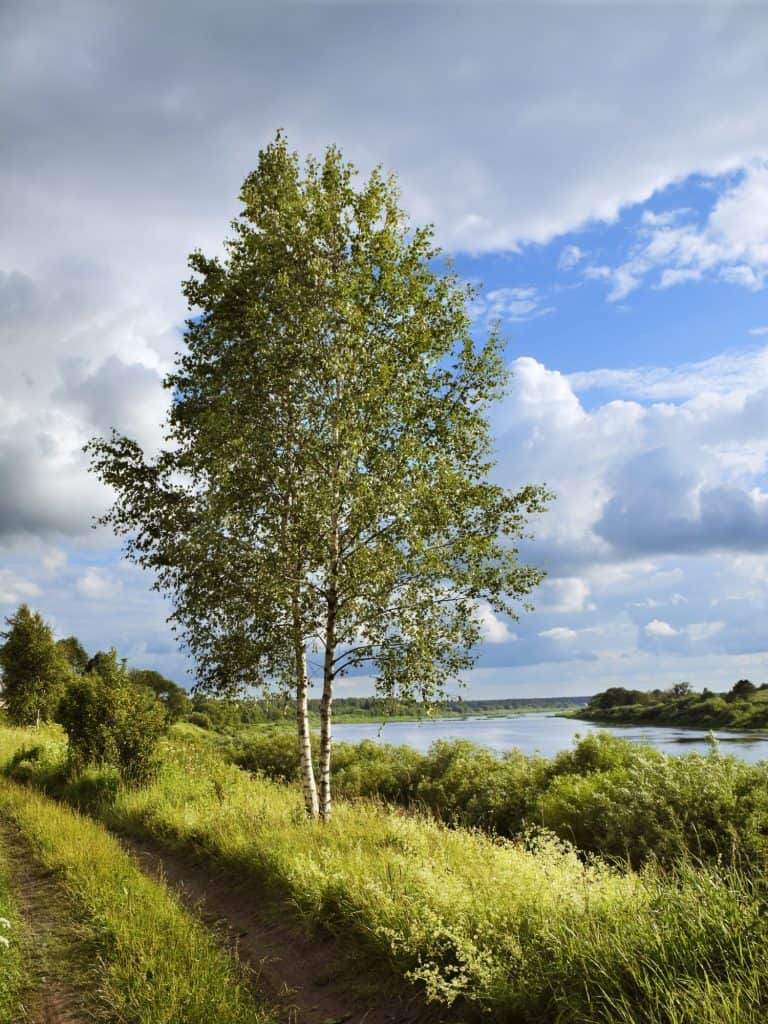
River birch is an easy-to-grow tree that loves very wet areas and acidic and alkaline soils. River birch trees also hold up well during dry weather, so if your outdoor space doesn’t have moist soil year-round, this tree can still flourish. River birch is even more disease resistant than other birch trees.
Bushes That Soak Up a Lot of Water
Trees are not your only option when absorbing excess water from your garden. You can also rely on their smaller, shorter, and rounder cousins; bushes. Here are some suggestions for bushes to plant in your yard that can soak up some of the water and keep your outdoor space dry year round.
1. Cattail
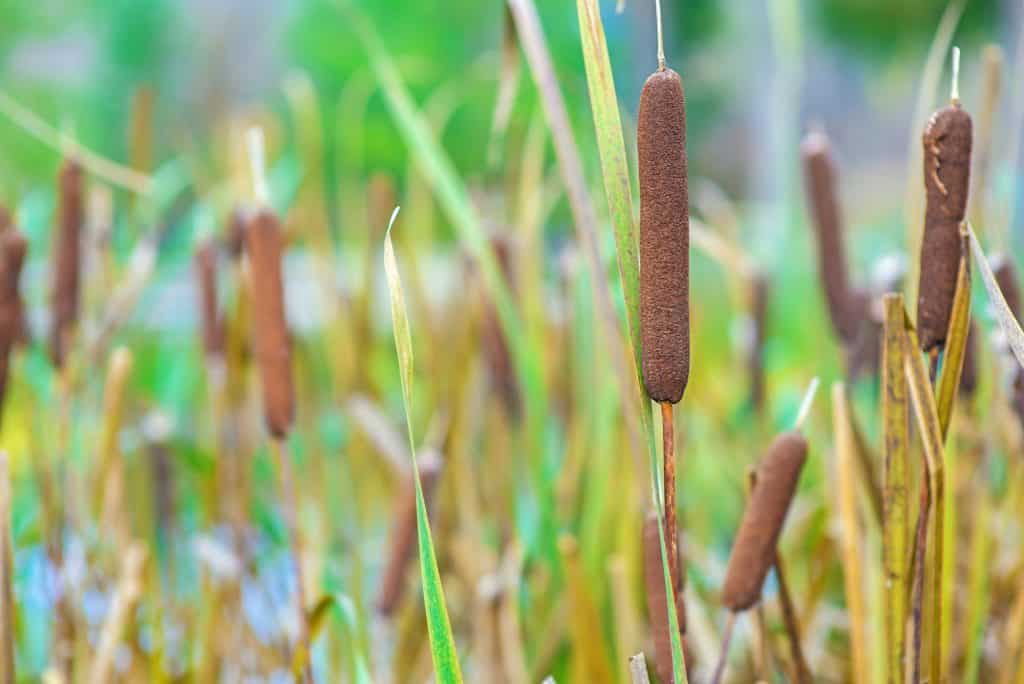
Cattails grow along waterways across North America. These plants are exceptional for planting in a water-soaked garden. Cattails also absorb more than just water; they help regulate nitrate levels in the water, which, in turn, protects your other plants against risks posed by excessive moisture.
2. Elephant’s Ear
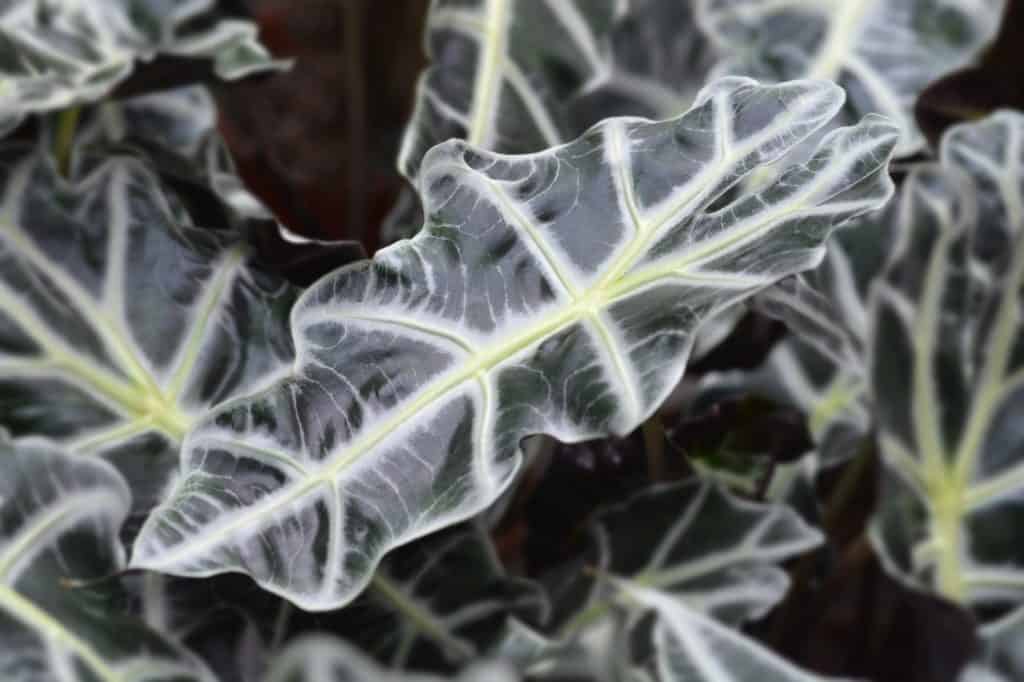
Elephant ears are a great addition to your garden. Not only do these bushes absorb up a lot of water from your property, but they also look fantastic. You can grow elephant ears in a wet area in your yard. This helps maximize the water that these thirsty plants can soak and maintain.
3. Spicebush
Spicebush is another native plant that grows well in water. Spicebush can grow up to 20 ft ( 6 meters) high, but most plants are more petite. On top of this, the spicebush leaves, twigs, and fruit can also make a tasty type of tea, so you’ll be getting a lot of value out of growing one of these species in your garden.
Shrubs That Retain a Lot of Water
For those of you who don’t know, shrubs are very similar to bushes; however, the branches of a shrub generally don’t touch the floor, and shrubs tend to grow taller and slightly less branch-dense than trees. Nevertheless, here are some great shrubs to plant when trying to keep your garden dry:
1. Inkberry
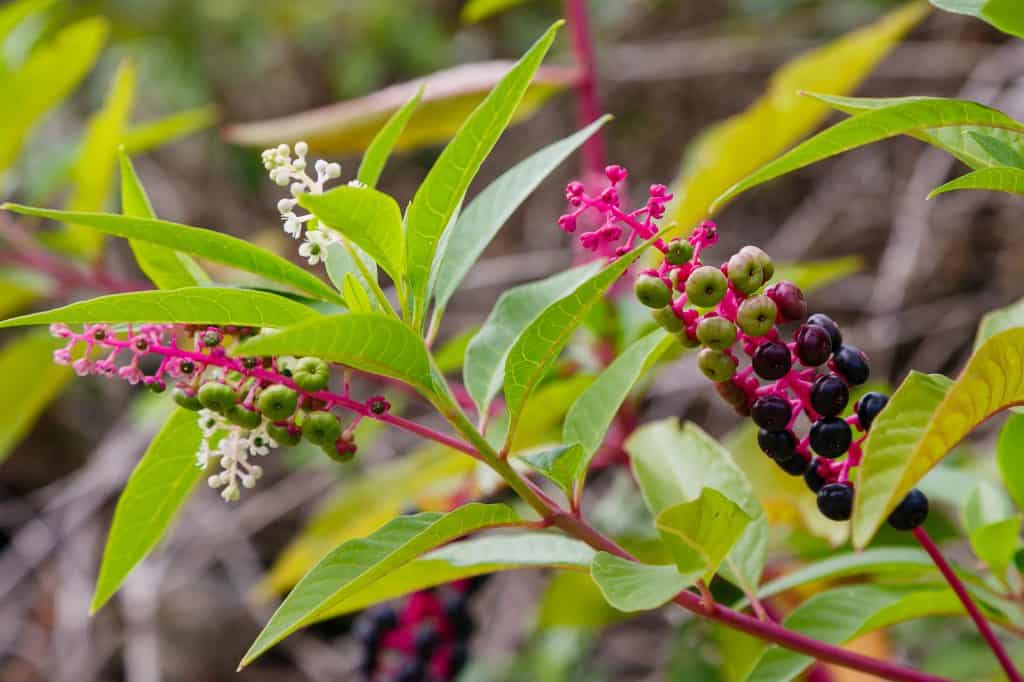
Inkberry (also known as pokeweed) is a member of the holly bush family. This shrub grows well in very wet conditions and can soak up a lot of water. Inkberry shrubs grow up to 12 feet (3.66 meters) tall and have small flowers. These shrubs are incredibly easy to grow; just remember not to eat the berries.
2. American Cranberry
As the name suggests, American cranberry shrubs are an indigenous American plant. These beautiful shrubs have white flowers and are excellent for soaking up excess moisture in your yard. On top of the drainage benefits this plant offers, you can also grow some delicious cranberries to enjoy.
3. Blue Elderberry
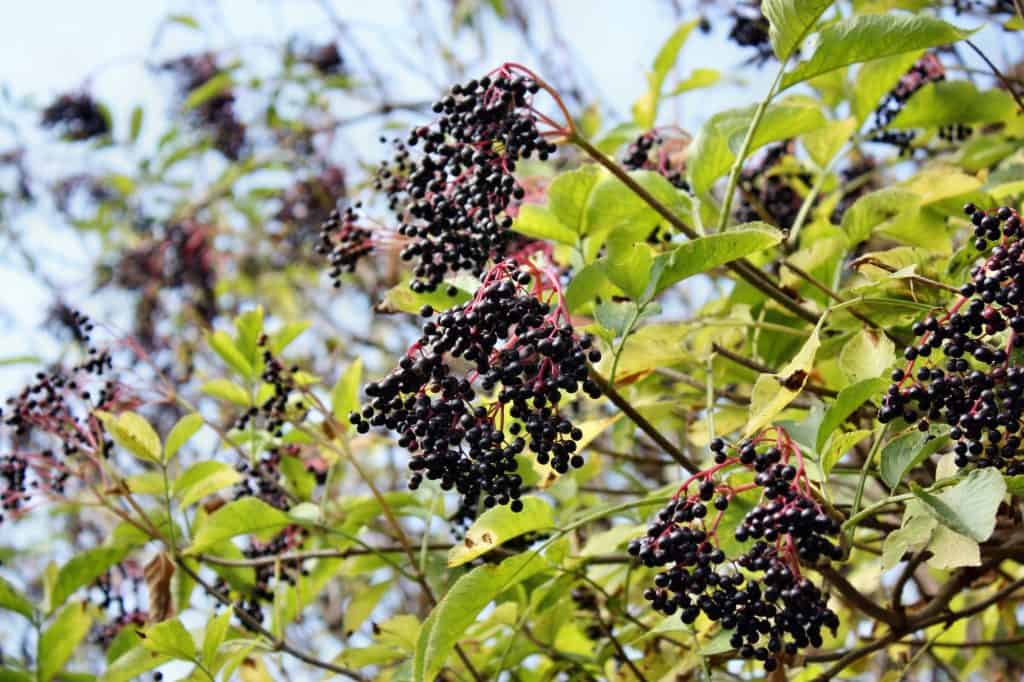
Once established, blue elderberries can flourish in wet conditions. In fact, this shrub can remain in constantly damp soil year-round. The blue elderberries on the shrub are also edible. You can even use them to make wine, jam, and pies. In short, this beautiful plant can grace your kitchen as well as your garden.
4. Red Twig Dogwood
Red twig dogwood is a plant that thrives in cold and wet conditions. Red twig dogwood has bundles of red sticks and twigs that offer a striking contrast to the usually white snowy surrounding. This shrub is so well adapted to the cold that it can even grow wild in Alaska and northern Canada.
Ground Cover
Ground cover plants generally don’t fare too well in excessively wet conditions. However, some species of ground cover plants have adapted to living in wetter conditions. Check out these ground cover plants that are well suited to growing in wet areas.
1. Carolina Jessamine
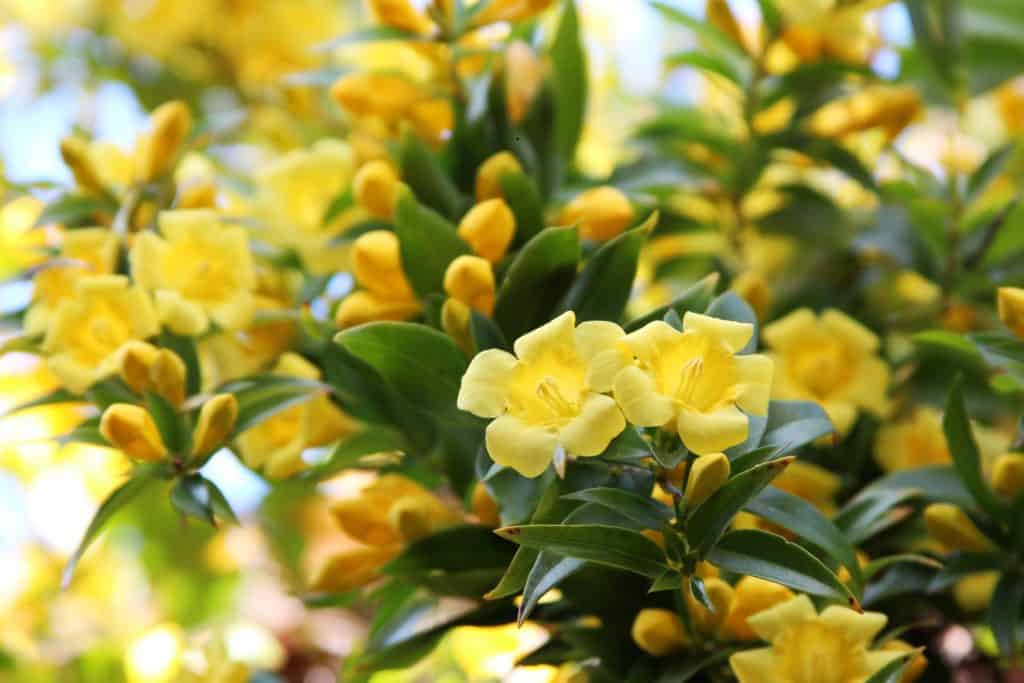
Carolina Jessamine is a cling vine that has large bright yellow flowers. This ground cover plant grows well in wet conditions and gives off an impressive aroma. Carolina jessamine grows well in warm climates and will struggle in cold weather. However, in the right conditions, this plant will thrive.
2. Ajuga
Ajuga is an excellent plant for growing in shaded, wet gardens. However, ajuga also grows in direct sunlight and is somewhat drought resistant, making it easy to grow. Ajuga also absorbs water and has beautiful blue flowers that can help bring your garden to life.
3. Indian Grass
Indian grass is a fantastic addition to any waterlogged garden. This ground cover plant thrives in wet conditions and can soak up high amounts of moisture. Indian grass also grows thick and can reach over 6 feet (1.83 meters) in height. As a result, you can also shade areas in your garden by growing Indian grass.
Flowers Can Also Absorb Excess Water
When people think about using plants to improve the drainage on their property, they typically think of large plants like trees, bushes, and shrubs. However, flowers are also effective at soaking up water, provided you choose the right type of flower, and you plant enough of them.
1. Irises
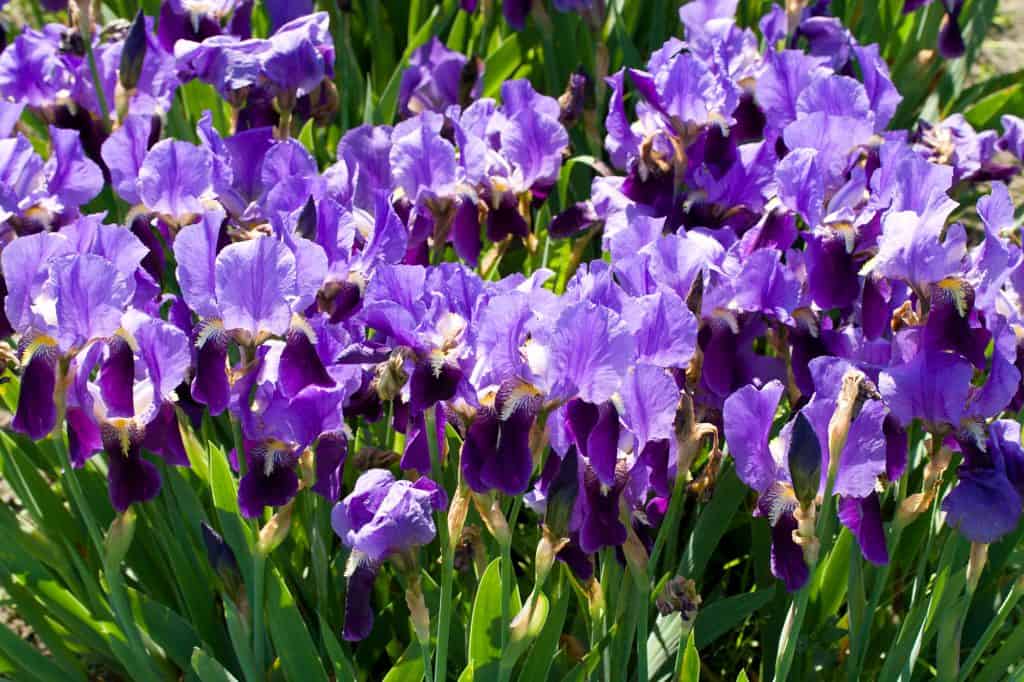
Irises are a beautiful and practical addition to a wet garden. These blue flowers are a terrific aesthetic addition to your property, yet they also soak up a surprising amount of water for such a small plant. As a result, irises are one of the best flowers for soaking up water in your garden.
2. Daylilies
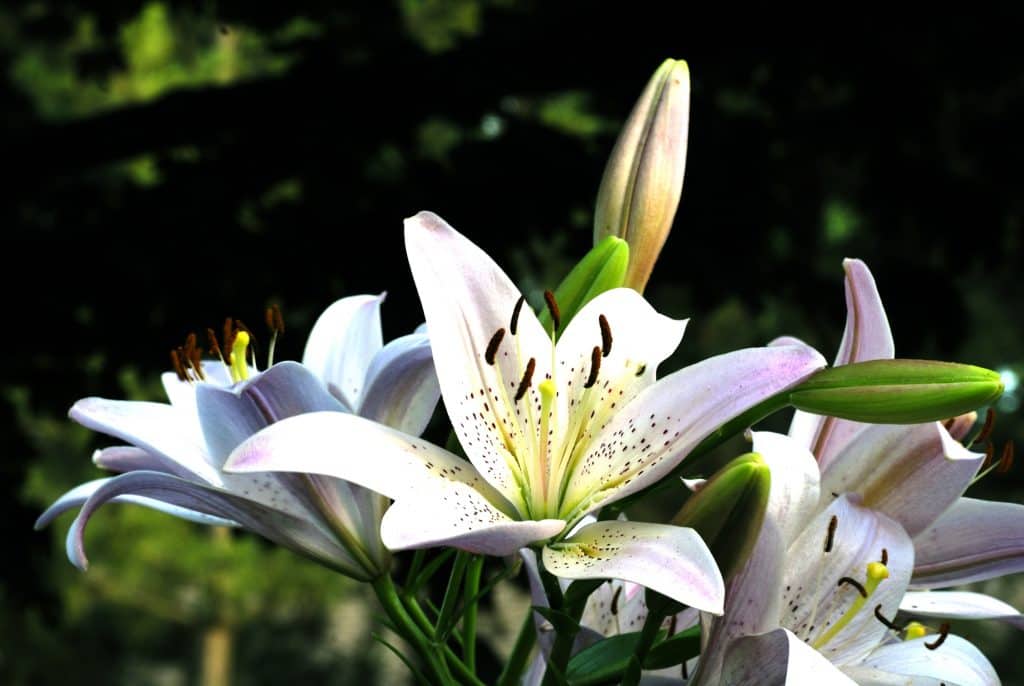
Humans have cultivated daylilies for centuries. As a result, there are over 30,000 hybrids of daylilies that you can choose for your garden. Therefore you have a plethora of colors to choose from. Moreover, all species of daylilies are excellent for soaking up water.
3. Hibiscus
Hibiscus flowers are red and intricate. These flowers also grow well in water and will help soak up some of the excess moisture. Not to mention that hibiscus flowers can be used to make tea. Hibiscus tea has numerous health benefits, including being a digestion aid.
Alternative Drainage Solutions
If you need drainage solutions in a hurry, you can’t afford to wait ten or twenty years for a big maple tree to grow and soak up excess water. Luckily, there are some alternative drainage solutions to planting shrubs, bushes, and trees on your property. Here are a few ideas for improving your drainage.
Retaining Walls
Retaining walls are walls built into slopes or uneven ground on a property. Retaining walls are typically installed to improve water management and prevent soil erosion. However, retaining walls can also offer excellent aesthetic benefits when they’re done right.
If you would like to learn more about retaining walls and how they can protect your property against floods, check out our Ultimate Guide to Retaining Walls.
Hire a Landscaper
Hiring a professional landscaper or landscape company is another way of fixing your drainage issues. Landscapers are experts at helping you to implement a water management strategy. With their expert help, you’ll be able to keep parts of your property dry while directing the excess water elsewhere.
While hiring a landscape company is one of the most effective solutions for preventing flooding, it is unfortunately also one of the most expensive.
Install a Sump Pump
A sump pump is a pump fit underground near the foundations of your home. This pump drains away excess water from your home. While this feature is typically installed to protect foundations and basements against flooding, sump pumps also keep water from pooling on lawns and in your yard.
As a result, you could use a sump pump alongside your plants to prevent flooding or excess water levels in your home.
If you’re not a fan of these alternative solutions, there’s a wide array of trees that you can use to soak up excess water on your property (just as we discussed). Red maple, ash, black gum, and weeping willow are just a few examples.
However, trees are not the only plants you can propagate to absorb water. You can also use bushes like elephant’s ears and cattail or shrubs such as American cranberry and red twig dogwood.
As you can see, your options are virtually endless.

